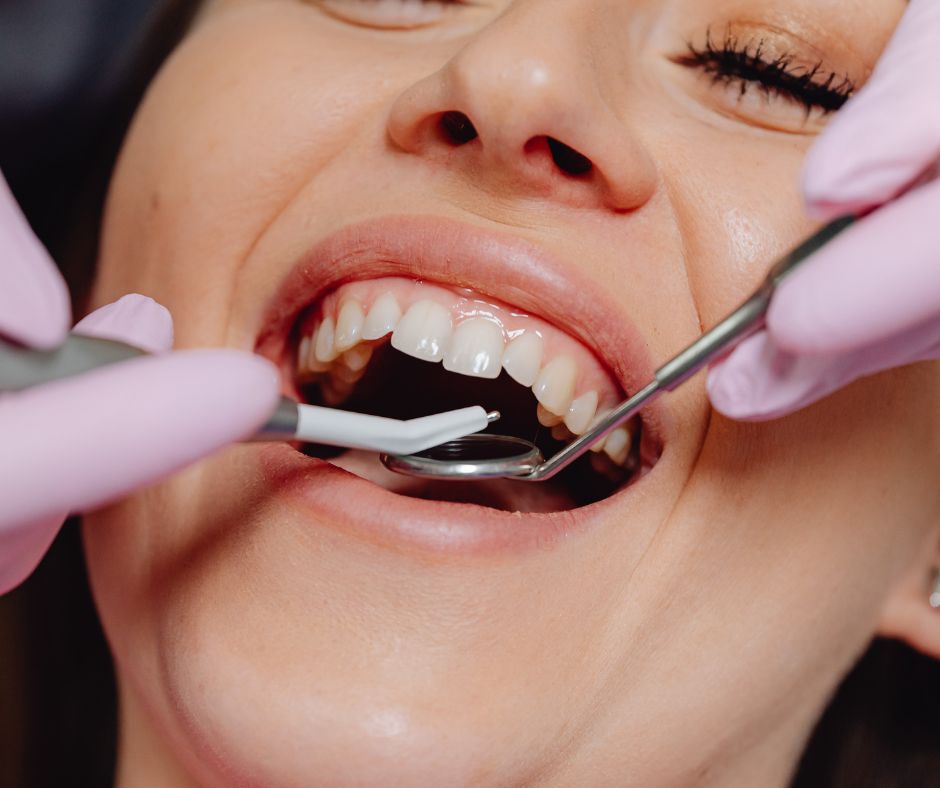
Tooth pain has a way of stopping life in its tracks. Whether it’s a dull ache that won’t go away or sharp discomfort every time you bite down, it often signals that something more serious is happening. In some cases, the solution is a tooth extraction. While no one looks forward to losing a tooth, extractions are often the key to restoring comfort, protecting oral health, and preventing bigger problems down the road.
This guide explains the most common signs you may need an extraction, what the procedure involves, and how to recover smoothly. If you’re considering tooth extraction in West Michigan, understanding the process can help you feel more prepared and at ease.
Sign #1: Severe Tooth Decay
When cavities are caught early, fillings or crowns can save the tooth. But when decay has spread too deeply—damaging the pulp, root, or surrounding bone—restorative options may no longer be enough. In these cases, extraction prevents infection from spreading further and allows for healthier options like implants or bridges to replace the tooth.
Sign #2: Advanced Gum Disease
Periodontal disease affects the gums and bone that support your teeth. In its advanced stages, it can cause teeth to loosen. If a tooth has lost too much support, extraction may be necessary to preserve the health of the surrounding teeth and gums.
Sign #3: Impacted or Problematic Wisdom Teeth
Wisdom teeth are notorious for causing trouble. When they don’t have enough space to grow properly, they may push against neighboring teeth, cause infections, or remain impacted beneath the gums. In these situations, extraction is often the safest option.
Sign #4: Overcrowding
Sometimes teeth need to be removed as part of orthodontic treatment. If there isn’t enough room in the mouth for teeth to align correctly, extracting one or more teeth creates space for braces or aligners to work effectively.
Sign #5: Trauma or Irreparable Damage
Accidents, sports injuries, or severe fractures can sometimes damage a tooth beyond repair. When this happens, extraction not only relieves pain but also makes way for restorative treatments that can bring back function and appearance.
What Happens During a Tooth Extraction
The idea of a tooth extraction can feel intimidating, but with today’s advanced techniques and anesthesia options, the procedure is usually straightforward and comfortable.
The Process
- Consultation and imaging: Your oral surgeon will take X-rays to assess the tooth, roots, and surrounding bone.
- Anesthesia options: Local anesthesia, sedation, or general anesthesia may be recommended depending on the complexity of the case.
- Extraction:
- For simple extractions, the tooth is loosened and gently removed.
- For surgical extractions (such as impacted wisdom teeth), a small incision may be made to access and remove the tooth in sections.
- Stitches and gauze: If needed, stitches will help the gums close properly, and gauze will be placed to control bleeding.
The entire process typically takes less than an hour, though more complex cases may take longer.
Recovery: What to Expect After Extraction
Healing after an extraction is usually smooth with the right care. Here are some tips for a faster, more comfortable recovery:
- Rest and take it easy: Avoid strenuous activity for the first 24–48 hours.
- Control swelling: Use ice packs on the outside of your cheek during the first day.
- Manage pain: Follow your surgeon’s recommendations for over-the-counter or prescribed pain relief.
- Eat soft foods: Stick to yogurt, smoothies, soups, and mashed foods until you can comfortably chew.
- Avoid straws and smoking: Suction can dislodge the blood clot, leading to a painful condition called dry socket.
- Stay clean: Gently rinse with warm salt water and brush carefully around the surgical site.
Most patients feel significantly better after a few days, with complete healing occurring over a couple of weeks.
Replacing an Extracted Tooth
Unless the extraction is for wisdom teeth or orthodontic purposes, replacing the missing tooth is important for long-term oral health. Options include:
- Dental implants: The gold standard for replacement, offering strength, stability, and a natural look.
- Bridges: Fixed restorations that anchor to neighboring teeth.
- Dentures or partials: Removable options for replacing multiple missing teeth.
Your oral surgeon will discuss the best option for your situation, taking into account health, budget, and long-term goals.
Why Choose Professional Care for Tooth Extraction
While some general dentists perform extractions, oral surgeons specialize in them. For patients considering tooth extraction in West Michigan, professional surgical care offers:
- Expertise in complex cases, such as impacted or broken teeth.
- Access to advanced anesthesia and sedation for maximum comfort.
- Modern imaging and planning tools for precision and safety.
- A supportive, compassionate team that prioritizes your comfort from start to finish.
Myths About Tooth Extractions
- “It’s always painful.” With anesthesia and sedation, most patients feel only mild discomfort afterward.
- “It takes forever to recover.” Many patients return to normal activities within a few days.
- “Losing one tooth isn’t a big deal.” Without replacement, missing teeth can cause shifting, bone loss, and bite problems.
- “It’s only for severe cases.” Extractions are sometimes recommended proactively to prevent future issues, especially with wisdom teeth.
Taking the Next Step Toward Relief
A tooth extraction may not sound like good news, but in many cases it’s the best step toward protecting your oral health and relieving ongoing discomfort. By understanding the signs, knowing what to expect during the procedure, and following recovery instructions, you can approach the process with confidence.
If you’re looking for trusted tooth extraction in West Michigan, the board-certified surgeons at West Michigan Oral & Maxillofacial Surgery are here to help. With advanced technology, compassionate care, and years of expertise, we make your health and comfort our top priority.
Schedule your consultation today and take the first step toward relief and restored oral health.
